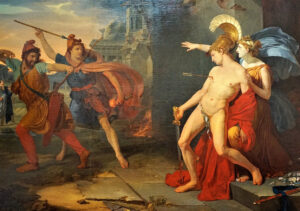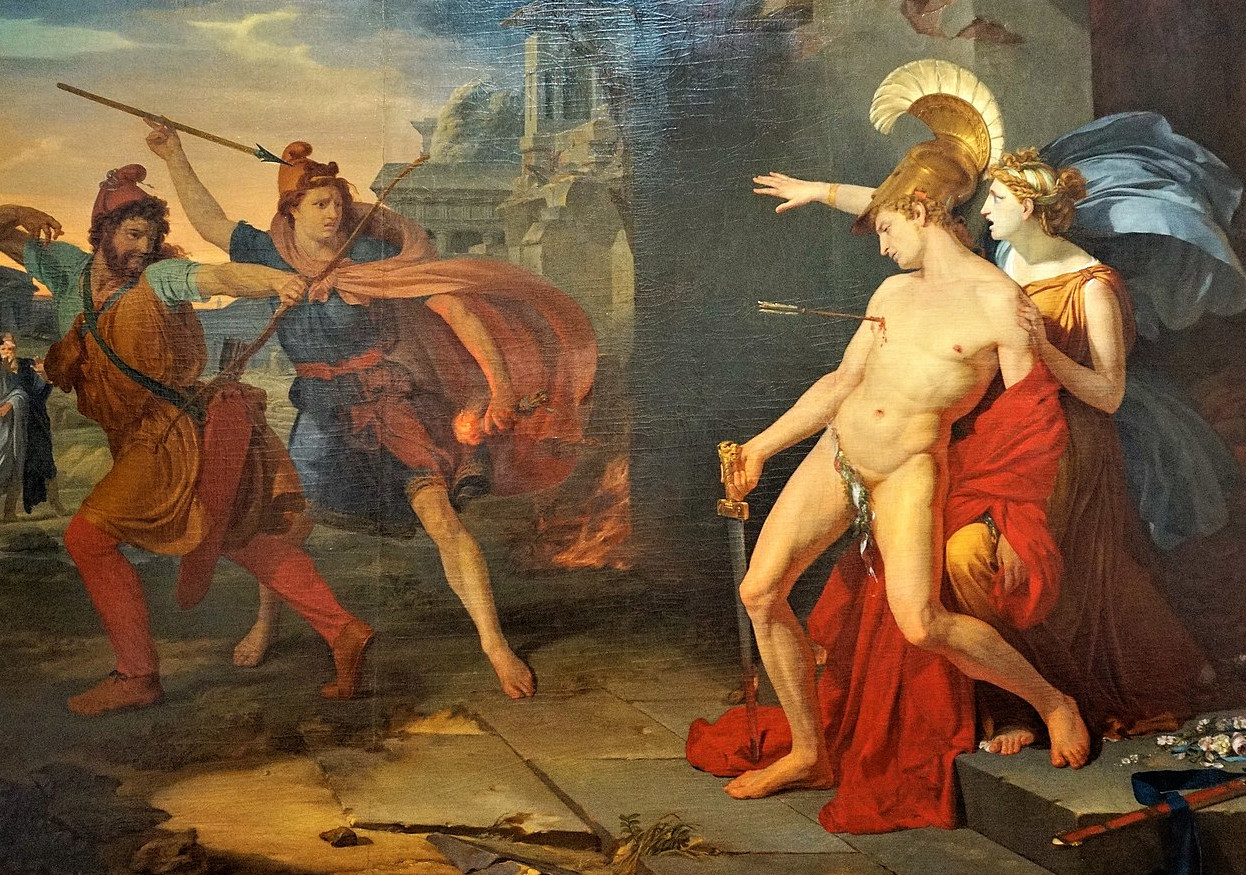For someone living now, the 17th century seems like a long time ago. Four hundred years have passed; only specialist historians have a good grasp on those who were once famous.
The same thing happened in Rome. At the time of Cicero, in the first century BCE, the fifth century BCE was also 400 years in the past. It was in that first century that a fellow named Cornelius Nepos wrote a history of all the eminent generals four centuries in his past. This book is an examination of what Nepos wrote, which is in many ways a key source for the fifth century BCE, which is 2,500 years in our past.
The author of this new book is Francesco Ginelli; he received his PhD in Literature and Philology from the University of Verona and is a postdoctoral researcher at the University of Milan.
I will get my major beef with this book out of the way first. The extant text by Nepos is printed on just 19 pages of this book, in the original Latin. But it is not translated into English! This would only have added another 19 pages. I find this inexplicable, and it certainly limits the appeal of the book. Not everyone deeply interested in ancient times can read Latin! The Commentary on the text, which runs from page 81 to 289, is in English, and comprises the bulk of the book.
The Introduction to the text by Nepos runs to 53 pages, and I suggest a close look at the footnotes (there are 192 of them), which contain much valuable information. For example, fn 19 tells us “we can deduce that Cicero and Nepos disagreed about the value and usefulness of philosophy. Nepos claimed that teachers of philosophy often live their lives ignoring the very same moral principles they teach in their schools. Nepos’ view probably annoyed Cicero, who, in a letter to Atticus, used words full of sarcasm against the biographer.”
Nepos wrote 16 books of history, but sadly only one survives. The author tells us “The current division of Nepos’ text into chapters and paragraphs was first established by A. van Staveren in his significant edition of 1734.” We do not know exactly what sources Nepos used, but we do know they were sometimes incomplete. The birthdate of some of the generals was unknown even to him, so he uses instead the first recorded political or military action. “This choice, unfamiliar to the modern reader, is justified by the state of Nepos’ sources.”
In 1901, Ginelli tells us that Friedrich Leo divided classical biography into three classes. He looked at the biographies and Nepos, and found that 6 fit in one class, 14 in the second, and three more in the third. While his division is still widely accepted, Ginelli says it has two weaknesses. First, our knowledge of Hellenistic biography is so fragmentary that it is “dangerous to develop clear classifications based on content and structure.” Its second weakness derives from its rigid structure. “Furthermore, Leo does not persuasively explain why Nepos decided to use three different ‘models’ of biography in a single book.” This highlights the folly of trying to establish a classification system, but Ginelli does not treat with that broad issue. An exploration of that issue is warranted here, as us moderns have nearly lost the capacity to think of a ‘model’ as a rule in the broad sense Alcibiades, for example, being a model of conduct. Pliny described Polykleitos”s statue of a spear-bearer as a ‘model statue’ that could be used as a rule for later artists in representing human form. As some of these generals had statues erected in their honour, an interesting philosophical/art historical discussion would have been welcome here.
As usual, the words of the ancient author in question usually points to the correct interpretation. At the beginning of the biography of Pelopidas, Nepos wrote “I am in doubt how to give an account of his merits; for I fear if I undertake to tell of his deeds, I shall seem to be writing a history rather than a biography; but if I merely touch upon the high points, I am afraid that to those unfamiliar with Grecian literature it will not be perfectly clear how great a man he was.”
Ginelli concludes that “Nepos is well aware that he is writing biographies and that (literally) ‘writing lives’ is an independent genre with its own features.” As for type of narration, Ginelli observes that he typically “adopts a subsequent narration, since he is describing events which have already taken place in the past. The use of the ‘historical present’ should be interpreted as a strategy to create suspense, not as the evidence of a narrative simultaneous with its events.” Actually, the biographies are arranged in order to highlight specific themes, such as a champion of political intelligence, an example of cruelty, or the ability to use tricks. By evoking “selected moral examples for the benefit of his audience,” Nepos did not produce texts that could be neatly stacked in three rigid classes.
In the Commentary section, each is based on a passage in Latin, but some are much more understandable than others. For example, a phrase beginning with ab eaque on page 282 is glossed as “the frequent use of participles suggests the speedy retreat of the oligarchic troops.” The explanation then moves to a discussion of the ablative absolute or two words in the Latin phrase, which is the origin of a certain saying in Italian. A bit dense for all but the most expert Latinist.
Ginelli wisely critiques Nepos in some cases. A fellow named Thrasybulus is the protagonist of a biography, “where Nepos, maybe too lavishly, asserts that Thrasybulus achieved many goals without Alcibiades, while Alcibiades did nothing without the former.” Ginelli devotes 42 pages to comments on the biography of Alcibiades, easily the most notorious figure of the age; another 15 pages of comments are given over to Thrasybulus.
The relationship between Alcibiades and Tissaphernes, commander-in-chief of the Persian army in Asia Minor, merits a lengthy entry on page 249. Ginelli notes their friendship “was not entirely altruistic, but was likely enhanced by the alliance between Sparta and Persia.” (yes, a Greek city-state aligned itself with the arch enemy of Greece!)
Alcibiades “persuaded the Spartans to support Tissaphernes. After the defeat of the first contingent, Alcibiades moved the Spartans to a second fleet of fifty ships.” He joined this second expedition and after his defection to the Persians, “he became the advisor to Tissaphernes.” Thus Alcibiades, the golden boy of Athens, did all he could to help Persia. He made Benedict Arnold look like an American patriot. Although they are not directly connected here, I found Ginelli’s lengthy commentary (page 222) on perfidia (treachery) to dovetail neatly with the Alcibiades tale.
Perfidia “is an attribute of someone who does not respect pacts or agreements.” Enter Lysander, a Spartan military leader. There was island named Thasos, which was controlled by pro-Athenian politicians. He “requested their surrender in exchange for their lives. But he killed them all.” In 405 BCE Lysander destroyed the Athenian fleet, leading Alcibiades to take refuge with a Persian satrap, Pharnabazus. In yet another turn of the screw, he lobbied the satrap to help Athens. But Lysander was having no more, and with the help of Pharnabazus, he arranged for the assassination of Alcibiades.
While it takes a bit of effort to comb the Commentary given by Ginelli, it pays dividends in a fuller understanding of the triumphs and tragedies of 5th century Greece. A very fine example of classical scholarship, this will be of great help to those interested in understanding how Greece became the crucible of democracy.
Cornelius Nepos: The Commanders of the Fifth Century BCE lists for $190. It is by Oxford University Press.
Image: The assassination of Alcibiades. Painted by Philippe Chery in 1791. This file has been identified as being free of known restrictions under copyright law, including all related and neighboring rights.

